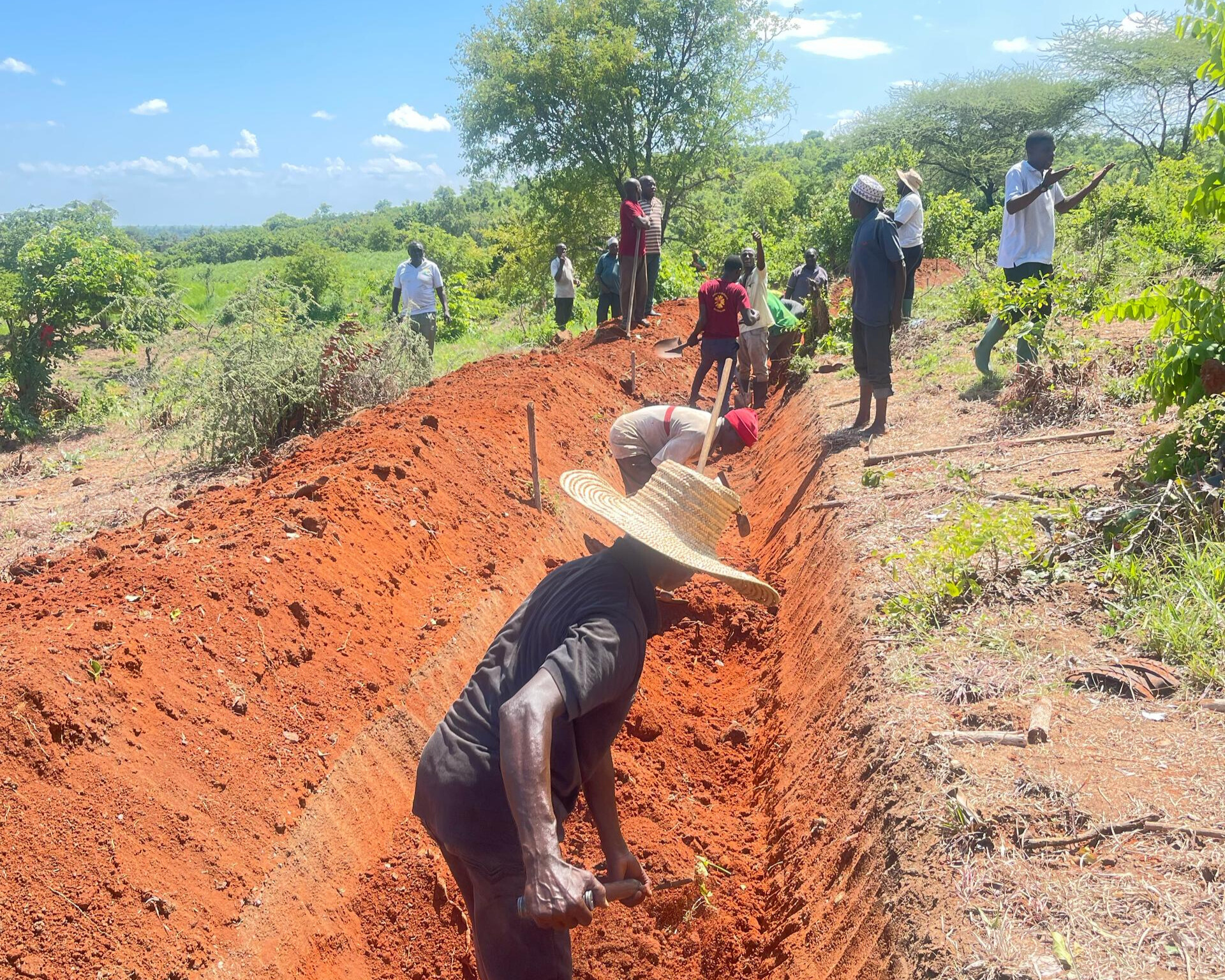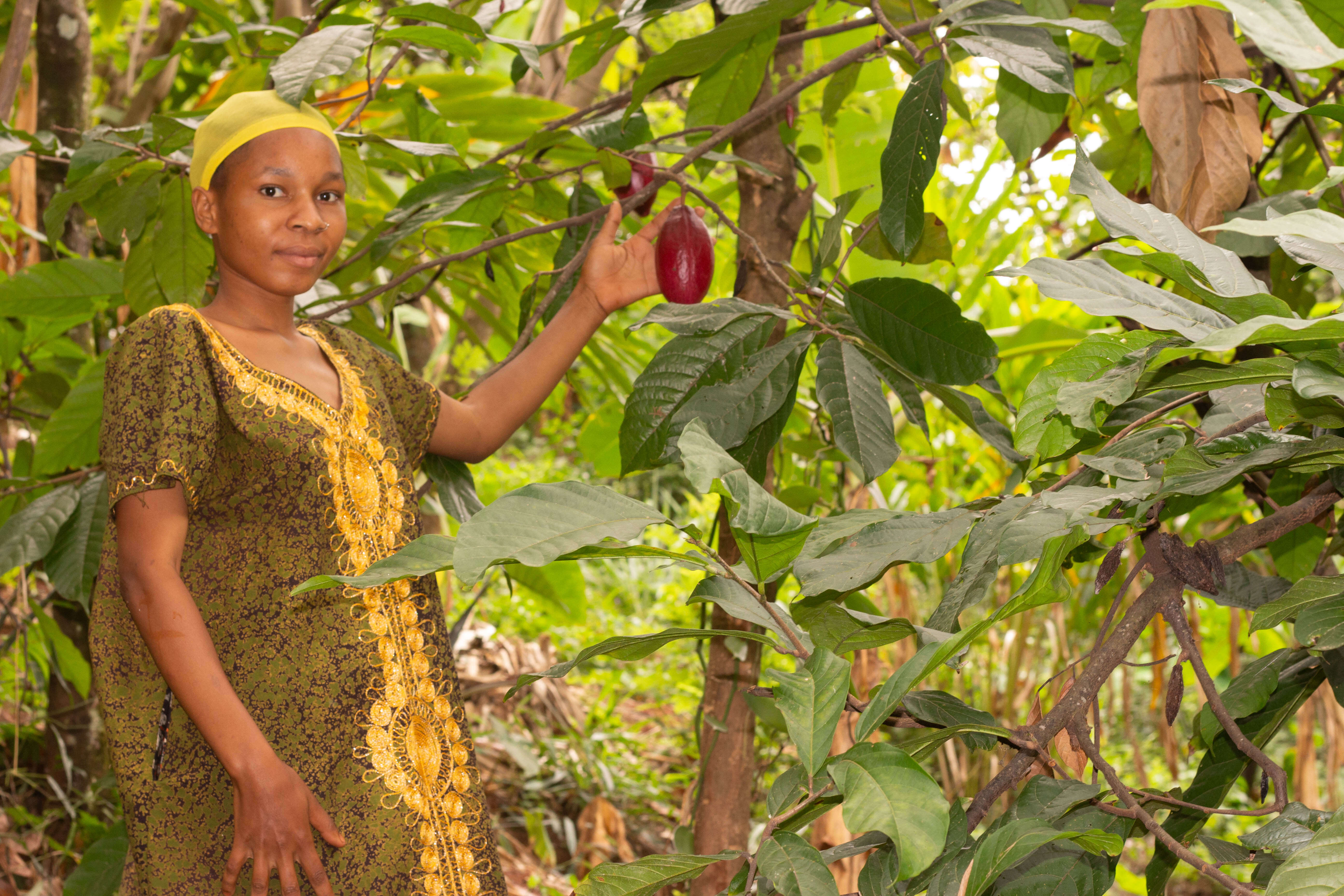Joint Efforts to Redress the Challenges in Drylands
From 27th February to 1st March 2020, Sustainable Agriculture Tanzania (SAT) hosted as part of the Farmers & Pastoralists Collaboration project a workshop on agroforestry systems in dryland areas. Through field visits, presentations on research, discussions, and group work, the participants were able to identify the main challenges dryland inhabitants are facing and suggest systemic solutions. Farmers, pastoralists, researchers, students, and facilitators jointly developed four agroforestry systems. These promising combinations of technologies are now being tested and optimised.

Learn more about SAT’s work and vision
“I understand: there is not a single thing in nature that does not have its value for a farm", summarises Julia Samson, a pastoralist woman. She refers to the remarkable variety of technologies the group of roughly 20 people just admired on Mercy Meena’s permaculture dryland farm. The lush vegetable beds and crop fields around the house sharply contrast with the arid environment. All this becomes possible if only one cleverly combines various plant species and actively cares about soil and water management.
This farm visit is part of a four-day workshop on agroforestry in the course of the Farmers & Pastoralists Collaboration project. SAT invited pastoralists, farmers, soil and agroforestry scientists, students, and some of its staff members. The goal of the workshop is to outline agroforestry systems with appropriate technologies to redress the challenges faced by people living in the drylands. These systems shall be implemented, tested, researched and refined on the premises of the SAT Farmer Training Centre. Simultaneously, interested farmers and pastoralists will do their trials. Thus, they’ll contribute to the further refinement of the chosen agroforestry systems.

Agroforestry is a broad term. It refers to a combined land-use system that, in any case, is based on woody perennial plants like trees and shrubs and combined with at least one more component like crops or animals. The aim is to select beneficiary combinations of species to ensure food security, nutritional balance and economic dynamism. Chosen wisely, trees, crops, and livestock maintain the material cycles, create desirable agroclimatic conditions, and diversify the producer’s source of income. At best, the planned biodiversity increases the general biodiversity on the farmlands and in the surroundings.
However, the vast amount of species leads to an incredible number of possibilities to join them. To narrow this down, one needs to answer a set of questions: What’s the purpose the system should serve? What are the challenges the producers are facing? Which are the species that withstand the given conditions? What characteristics do they have?




The participatory and interdisciplinary approach of this workshop fostered a lively exchange concerning these questions. Even more so, because the participants had very diverse backgrounds. Scientists of World Agroforestry (ICRAF) and Sokoine University of Agriculture (SUA) presented the latest relevant findings and clarified the underlying concepts. Farmers and pastoralists, for their part, contributed local knowledge on tree species, insight in their challenges, and critical feedback on feasibility. SAT, finally, provided the holistic agroecological perspective.
In his presentation Agroforestry Research and Development in Tanzania, Dr Anthony Kimaro (ICRAF) explains the processes by which trees improve soil productivity. On the one hand, they increase the inputs of nutrients and organic matter, but also raise the nutrient availability for crops, and reduce the losses of soil. On the other hand, trees may improve the physical and biological soil properties and thereby enhance the moisture content. He then gives an overview of how agroforestry is implemented in Tanzania.

At the end of this presentation, Julia Samson shows her wit again: “There are really no questions from my part, but I congratulate you. What I saw were all well-known trees from our environment. If we start planting them, our cattle will gain weight; you won’t believe that.” Julia, a pastoralist who practises pasture management, quickly grasped the prospect of agroforestry. Many agroforestry systems have the potential, indeed, to fight the lack of fodder in the drylands.
During the workshop, Prof. Luther Lulandala from the Department of Ecosystems and Conservation at SUA repeatedly emphasises: “Identify the challenges you want to overcome, and you will find a suitable agroforestry system for the aims you pursue.” The difficulties in the drylands are manifold and very often interconnected. Through group work, the participants pinned down the most challenging issues. There is a shortage of firewood and water, the careless cutting of trees aggravates the loss of arable land, which, in turn, increases land-use conflicts. Food and fodder insecurity affect people and livestock. Both animals and crops frequently get infested by pests. There are little opportunities for economic activities and development.


However, there are good chances that a systemic approach like agroforestry positively affects this complex situation. The workshop participants developed four promising designs that now need to prove their efficacy and feasibility.
Learn about organic agriculture at our Farmer Training Centre
During the field visit on the fourth day of the event, many benefits of agroforestry already became clear. Dryland farmers who are part of current and completed research projects of ICRAF guided the visitors through their farms, tree nurseries and animal pens. What they showed is encouraging: Their maize is strong and healthy, their animals are well-fed, and the woodpiles were abundant in cut branches of gliricidia trees. This cooking fuel is a renewable product of their agroforestry system.






This workshop on agroforestry in drylands as part of the Farmers & Pastoralists Collaboration project was kindly supported by Biovision Foundation for Ecological Development and made possible through the collaboration of World Agroforestry (ICRAF) and Sokoine University of Agriculture (SUA).









